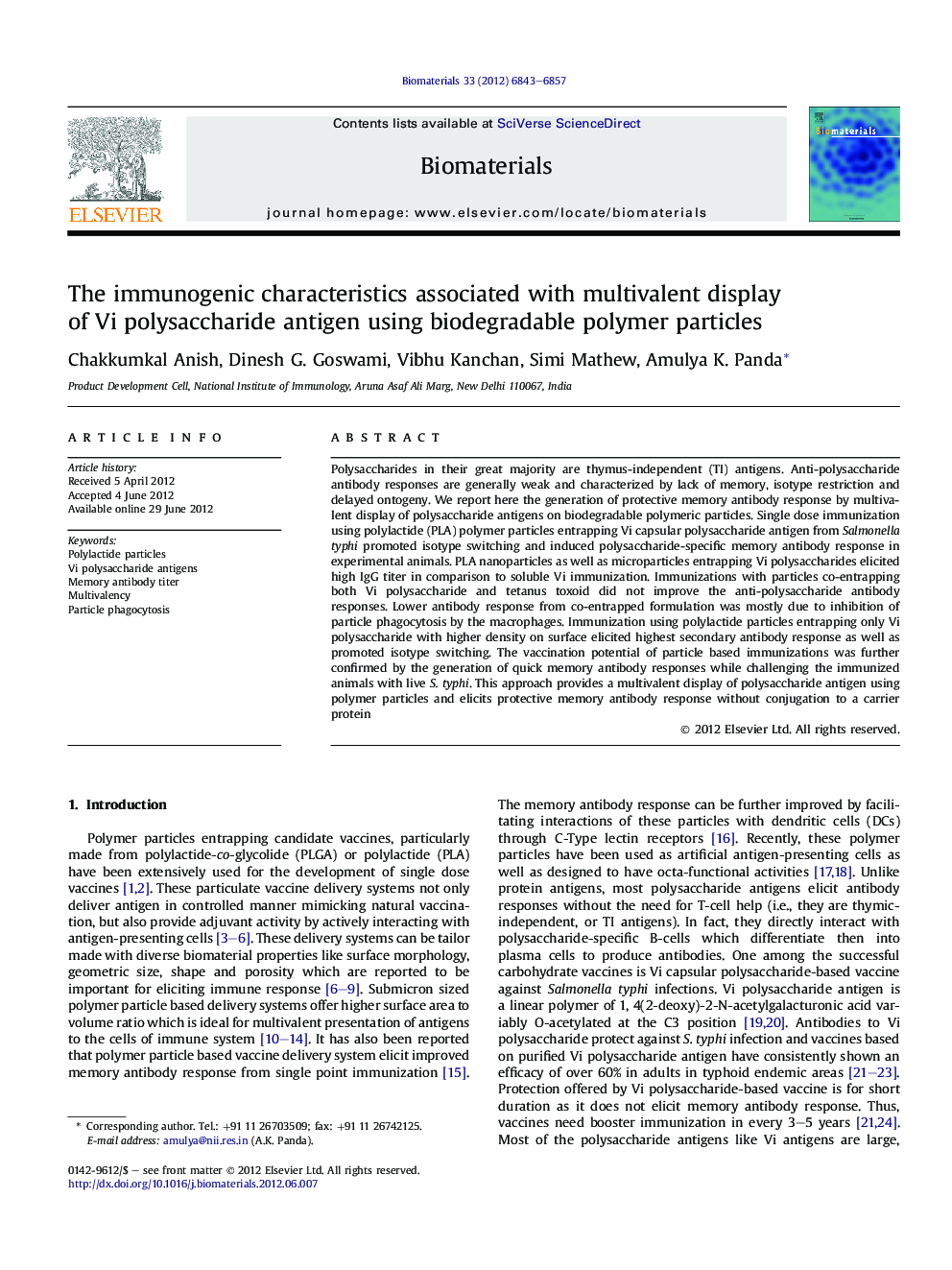| Article ID | Journal | Published Year | Pages | File Type |
|---|---|---|---|---|
| 10229483 | Biomaterials | 2012 | 15 Pages |
Abstract
Polysaccharides in their great majority are thymus-independent (TI) antigens. Anti-polysaccharide antibody responses are generally weak and characterized by lack of memory, isotype restriction and delayed ontogeny. We report here the generation of protective memory antibody response by multivalent display of polysaccharide antigens on biodegradable polymeric particles. Single dose immunization using polylactide (PLA) polymer particles entrapping Vi capsular polysaccharide antigen from Salmonella typhi promoted isotype switching and induced polysaccharide-specific memory antibody response in experimental animals. PLA nanoparticles as well as microparticles entrapping Vi polysaccharides elicited high IgG titer in comparison to soluble Vi immunization. Immunizations with particles co-entrapping both Vi polysaccharide and tetanus toxoid did not improve the anti-polysaccharide antibody responses. Lower antibody response from co-entrapped formulation was mostly due to inhibition of particle phagocytosis by the macrophages. Immunization using polylactide particles entrapping only Vi polysaccharide with higher density on surface elicited highest secondary antibody response as well as promoted isotype switching. The vaccination potential of particle based immunizations was further confirmed by the generation of quick memory antibody responses while challenging the immunized animals with live S. typhi. This approach provides a multivalent display of polysaccharide antigen using polymer particles and elicits protective memory antibody response without conjugation to a carrier protein
Keywords
Related Topics
Physical Sciences and Engineering
Chemical Engineering
Bioengineering
Authors
Chakkumkal Anish, Dinesh G. Goswami, Vibhu Kanchan, Simi Mathew, Amulya K. Panda,
